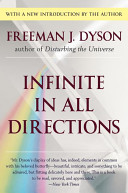Error Catastrophe
The central problem for any theory of the origin of replication is the fact that a replicative apparatus has to function almost perfectly if it is to function at all. If it does not function perfectly, it will give rise to errors in replicating itself, and the errors will accumulate from generation to generation. The accumulation of errors will result in a progressive deterioration of the system until it is totally disorganized. This deterioration of the replicative apparatus is called the "error catastrophe." The same difficulty arises also in the Cairns-Smith theory. Since Cairns-Smith is relying on clay crystals to transmit genetic information from generation to generation, the copying of the crystals must be extraordinarily exact if the information is to be preserved.
Both in the Eigen theory and in the Cairns-Smith theory, the only way in which we can avoid the error catastrophe is to assume that there is a strong Darwinian selection process acting on the replicating molecules. We must assume that the errors in each generation are weeded out by selection. In other words, the correct molecules of RNA or clay must be rewarded and the incorrect molecules penalized by different rates of survival. Even when a strong Darwinian selection of this sort is operating, the error catastrophe will still occur unless the error rate is kept low. Eigen has worked out a mathematical theory of the error catastrophe. The conclusions {82} of the theory are roughly as follows. Suppose that a self-replicating system is composed of TV independent units. For example, in the Eigen theory the system is a molecule of RNA composed of N nucleotides, while in the Cairns-Smith theory the system is a clay crystal with N metal atoms on its surface. Then the error catastrophe will occur unless the error rate in the copying process is of the order of (1/N) or smaller.
This condition for avoiding the error catastrophe is very stringent. It is barely satisfied in modern higher organisms which have N of the order of 10^8 and error rates of the order of 10^–8. To achieve an error rate as low as 10^–8, the modern organisms have evolved an extremely elaborate system of double-checking and error-correcting within the replication system. Before this delicate apparatus existed, the error rates must have been much higher. Eigen's criterion thus imposes severe requirements on any theory of the origin of life which makes replication a central element of life from the beginning.
All the experiments which have been done with RNA replication under abiotic conditions give error rates of the order of 10^–2 at best. If we try to satisfy Eigen's criterion without the help of pre-existing organisms, we are limited to a replication system which can describe itself with less than one hundred bits of information. One hundred bits of information is far too few to describe any interesting protein chemistry. This does not mean that Eigen's theory is untenable. It means that Eigen's theory requires an information-processing system which is at the same time extraordinarily simple and extraordinarily free from error. We do not know how to achieve such low error rates in the initial phases of life's evolution.
Notes:
Folksonomies: biology replication
Taxonomies:
/technology and computing/internet technology/email (0.550311)
/art and entertainment/movies and tv/television (0.356048)
/law, govt and politics (0.333526)
Keywords:
error catastrophe (0.970910 (negative:-0.253491)), error rate (0.752225 (negative:-0.669387)), error rates (0.751083 (negative:-0.536951)), strong Darwinian selection (0.746917 (negative:-0.653036)), theory (0.667837 (positive:0.036654)), Cairns-Smith theory (0.651624 (negative:-0.214024)), low error rates (0.637495 (negative:-0.513125)), Eigen (0.634975 (negative:-0.063512)), Eigen theory (0.628953 (neutral:0.000000)), replicative apparatus (0.623203 (negative:-0.174016)), TV independent units (0.573147 (negative:-0.342190)), Darwinian selection process (0.571878 (negative:-0.653036)), interesting protein chemistry (0.552949 (neutral:0.000000)), replication (0.517578 (positive:0.060609)), progressive deterioration (0.514224 (negative:-0.828846)), generation (0.507277 (negative:-0.657571)), central problem (0.504937 (positive:0.498734)), errors (0.501937 (negative:-0.697547)), RNA replication (0.500413 (neutral:0.000000)), incorrect molecules (0.500381 (positive:0.226208)), correct molecules (0.498186 (positive:0.226208)), mathematical theory (0.495241 (negative:-0.814780)), metal atoms (0.494753 (neutral:0.000000)), genetic information (0.494272 (neutral:0.000000)), abiotic conditions (0.492756 (neutral:0.000000)), different rates (0.491811 (positive:0.226208)), clay crystals (0.491230 (neutral:0.000000)), pre-existing organisms (0.490766 (neutral:0.000000)), severe requirements (0.488873 (negative:-0.590634)), delicate apparatus (0.488500 (neutral:0.000000))
Entities:
Eigen:Person (0.848310 (negative:-0.362845)), One hundred bits:Quantity (0.848310 (neutral:0.000000))
Concepts:
DNA (0.972669): website | dbpedia | freebase | yago
Evolution (0.691169): dbpedia | freebase | opencyc
Gene (0.612573): dbpedia | freebase
Observational error (0.592020): dbpedia | freebase
Biology (0.575846): dbpedia | freebase | opencyc
Protein (0.539368): dbpedia | freebase | opencyc
Genetics (0.526850): dbpedia | freebase | opencyc
Natural selection (0.516124): dbpedia | freebase





